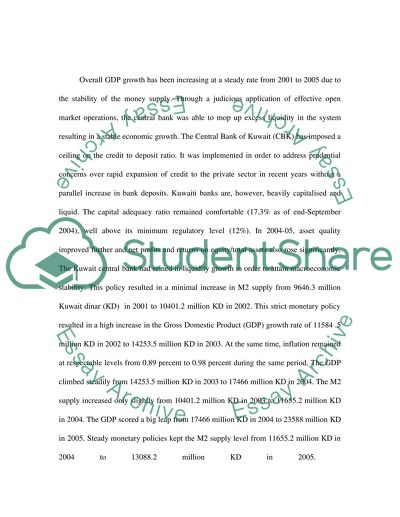Cite this document
(“Kuwait's Monetary Policy Statistics Project Example | Topics and Well Written Essays - 1000 words”, n.d.)
Kuwait's Monetary Policy Statistics Project Example | Topics and Well Written Essays - 1000 words. Retrieved from https://studentshare.org/macro-microeconomics/1503738-conduct-of-monetary-policy-in-kuwait-essay
Kuwait's Monetary Policy Statistics Project Example | Topics and Well Written Essays - 1000 words. Retrieved from https://studentshare.org/macro-microeconomics/1503738-conduct-of-monetary-policy-in-kuwait-essay
(Kuwait'S Monetary Policy Statistics Project Example | Topics and Well Written Essays - 1000 Words)
Kuwait'S Monetary Policy Statistics Project Example | Topics and Well Written Essays - 1000 Words. https://studentshare.org/macro-microeconomics/1503738-conduct-of-monetary-policy-in-kuwait-essay.
Kuwait'S Monetary Policy Statistics Project Example | Topics and Well Written Essays - 1000 Words. https://studentshare.org/macro-microeconomics/1503738-conduct-of-monetary-policy-in-kuwait-essay.
“Kuwait'S Monetary Policy Statistics Project Example | Topics and Well Written Essays - 1000 Words”, n.d. https://studentshare.org/macro-microeconomics/1503738-conduct-of-monetary-policy-in-kuwait-essay.


